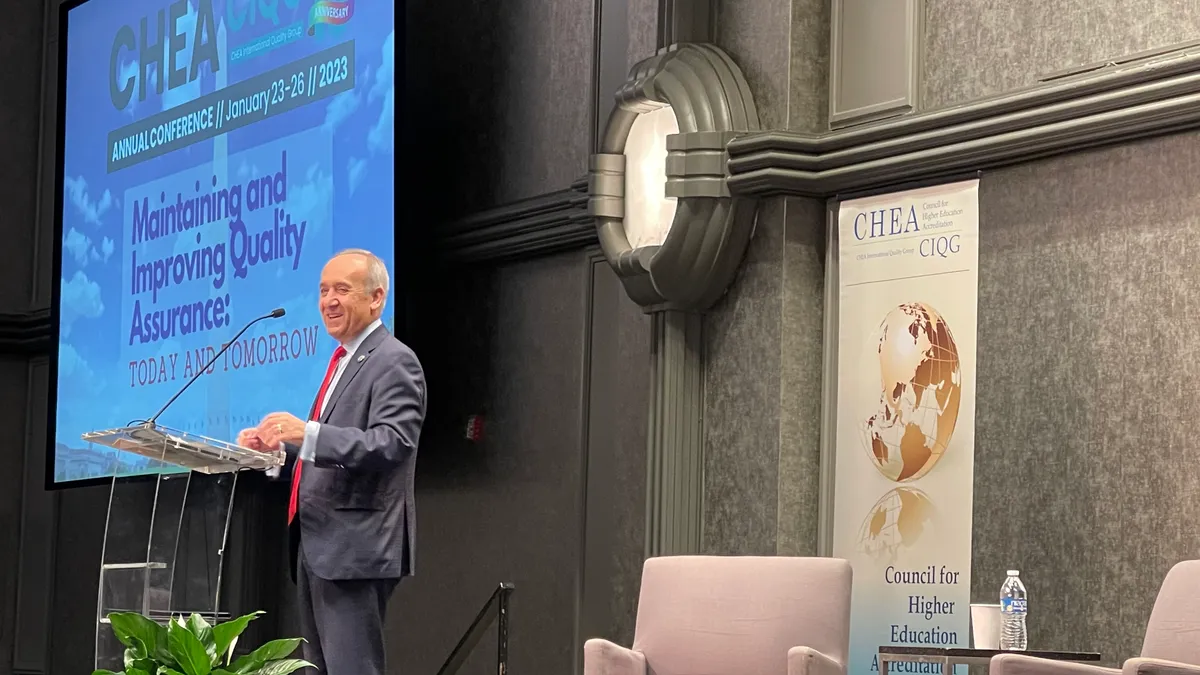Dive Brief:
- A high-level U.S. Department of Education official Wednesday called on states to work toward instituting tuition-free community college, a signature proposal of the Biden administration that stalled at the federal level.
- Nasser Paydar, assistant secretary for postsecondary education, spoke to a crowd at the Council for Higher Education Accreditation’s conference in Washington, D.C. He reiterated several other White House college affordability goals, like doubling the maximum federal Pell Grant award by 2029.
- Paydar also called out institutions, saying some “are chasing the rankings,” even though many others have invested in facilities and wraparound supports necessary to help students.
Dive Insight:
The Biden administration has pursued an aggressive regulatory agenda in the face of a gridlocked Congress that's unlikely to move on major postsecondary education reforms or a rewrite of the Higher Education Act.
The Education Department has announced it will begin policy negotiations on several higher ed regulations, including one that would govern accreditation. In his speech Wednesday, Paydar acknowledged the Education Department plans to act on accreditation but did not preview what a draft rule might entail. Several conference attendees told Higher Ed Dive they believe new rules will target accreditors that cater to for-profit institutions, as the Biden administration has already tried to clamp down on that sector.
Paydar said during his speech that the Education Department wants to hold accreditors accountable.
Critics have said the agency has sometimes failed in this. For example, one troubled accreditor, the Accrediting Council for Independent Colleges and Schools, was for years recognized by the Education Department despite consistently failing to meet federal standards.
Only last year did the Education Department revoke ACICS’ recognition. The Obama administration had attempted to do the same in December 2016 but was blocked by a court ruling.
Generally, accreditors have come under fire for not punishing institutions that are failing financially or that post poor student outcomes. Critics say accreditors, as membership organizations, have little incentive to come down on colleges that pay their bills.
Paydar said the federal government wants to help accreditors by providing them with helpful data while urging them to be mindful of institutions’ performance, like graduation rates.
He largely focused his comments on affordability, however. He lamented the Pell Grant’s declining purchasing power. In the 1970s, a maximum Pell Grant could pay for about three-fourths of the cost of attending a four-year college. In 2020, it covered less than 30%. Pell Grants target low- and moderate-income students.
A spending package President Joe Biden signed late last year boosted the maximum Pell Grant award by $500, to $7,395 this year. But Paydar said the administration aims to bolster Pell Grants further. A department adviser told Higher Ed Dive the goal is to double the maximum grant “within the next decade.”
States, meanwhile, should invest in more need-based aid and institute policies to assist with seamless transfers, Paydar said, repeating common talking points about improving college access.
In his remarks, he also highlighted several recently enacted rules, like new restrictions on the so-called 90/10 rule, which blocks for-profit colleges from deriving more than 90% of their revenue from Title IV financial assistance including federal student loans and Pell Grants.
Historically, for-profit colleges have dodged this requirement by drawing on benefits like those from the U.S. Department of Defense’s Tuition Assistance program and GI Bill. The new rule no longer allows this.











